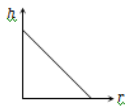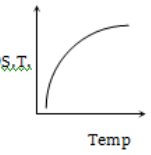
- Login | Register
- Full Course
- Full Course (English)
- Bio Masterclass
- All Courses
- NCERT Ebooks
- Chapter DPPs
- Custom Test
- Chapter Journey
- PYQ Marked NCERT
- Bridge (X- > XI)
- Leaderboard

Are you sure?
This action cannot be undone. This will permanently delete All Practiced Questions.
Only bookmarked questions of selected question set or default questions are shown here. Click Here to view all bookmarked questions of the chapter
Question No.
- 1 (current)
In a capillary tube experiment, a vertical 30 cm long capillary tube is dipped in water. The water rises up to a height of 10 cm due to capillary action. If this experiment is conducted in a freely falling elevator, the length of the water column becomes: 1. 10 cm 2. 20 cm 3. 30 cm 4. Zero
Other Reason
Highlight in NCERT
Kerosene oil rises up the wick in a lantern (1) Due to surface tension of the oil
(2) The wick attracts the kerosene oil
(3) Of the diffusion of the oil through the wick
(4) None of the above
Water rises against gravity in a capillary tube when its one end is dipped into water because
(1) Pressure below the meniscus is less than atmospheric pressure
(2) Pressure below the meniscus is more than atmospheric pressure
(3) Capillary attracts water
(4) Of viscosity

There is a horizontal film of soap solution. On it, a thread is placed in the form of a loop. The film is pierced inside the loop and the thread becomes a circular loop of radius \(R.\) If the surface tension of the loop is \(T,\) then what will be the tension in the thread? 1. \(\dfrac{πR^{2}}{T}\) 2. \(πR^{2} T\) 3. \(2 πRT\) 4. \(2 RT\)
A large number of water drops each of radius r combines to have a drop of radius R. If the surface tension is T and the mechanical equivalent of heat is J, then the rise in temperature will be
(1) 2 T rJ
(2) 3 T RJ
(3) 3 T J 1 r - 1 R
(4) 2 T J 1 r - 1 R
In a surface tension experiment with a capillary tube, water rises upto 0.1 m. If the same experiment is repeated on an artificial satellite, which is revolving around the earth, water will rise in the capillary tube upto a height of- (1) 0.1 m
(4) Full length of the capillary tube

The correct curve between the height of depression h of liquid in a capillary tube and its radius is

A soap bubble is blown with the help of a mechanical pump at the mouth of a tube. The pump produces a certain increase per minute in the volume of the bubble, irrespective of its internal pressure. The graph between the pressure inside the soap bubble and time t will be:
Which graph represents the variation of surface tension with temperature over small temperature ranges for water?

Two equal drops of water each of radius r are falling through air with a steady velocity
of 8 cm/s . The two drops combine to form a big drop. The terminal velocity of big
drop will be
(1) 8 ( 2 ) 2 3 c m / s
(2) 16 ( 2 ) 2 3 m
(3) 4 ( 2 ) 2 3 c m / s
(4) 32 cm/s
- [email protected]
- S-15, 2nd floor Uphar Cinema Market, above Red Chilli Restaurant, Green Park Extension, New Delhi, 110016

NEET Information
- NEET Syllabus
- NEET Application Process
- NEET Seat Intake
- NEET Previous Year Papers
- AIIMS Previous Year Papers
- NEET Course
- NEET Course (English)
- NEET Test Series
- Terms of Use
- Privacy Policy
- Refund Policy
Botany Questions
- Living World
- Biological Classification
- Plant Kingdom
- Morphology of Flowering Plants
- Anatomy of Flowering Plants
- Cell-unit of Life
- Cell Cycle and Cell Division
- Transport in Plants
- Mineral Nutrition
- Photosynthesis in Higher Plants
- Respiration in Plants
- Plant Growth and Development
- Reproduction in Organisms
- Sexual Reproduction in Flowering Plants
- Principles of Inheritance and Variation
- Molecular Basis of Inheritance
- Strategies for Enhancement in Food Production
- Microbes in Human Welfare
- Organisms and Populations
- Biodiversity and Conservation
- Environmental Issues
Chemistry Questions
- Some Basic Concepts of Chemistry
- Structure of Atom
- Classification of Elements and Periodicity in Properties
- Chemical Bonding and Molecular Structure
- States of Matter
- Thermodynamics
- Equilibrium
- Redox Reactions
- The s-Block Elements
- The p-Block Elements-XI
- Organic Chemistry - Some Basic Principles and Techniques
- Hydrocarbons
- Environmental Chemistry
- The Solid State
- Electrochemistry
- Chemical Kinetics
- Surface Chemistry
- General Principles and Processes of Isolation of Elements
- The p-Block Elements-XII
- The d and f Block Elements
- Coordination Compounds
- Haloalkanes and Haloarenes
- Alcohols, Phenols and Ethers
- Aldehydes, Ketones and Carboxylic Acids
- Biomolecules
- Chemistry in Everyday Life
Physics Questions
- Units and Measurement
- Mathematical Tools
- Motion in A Straight Line
- Motion in A Plane
- Laws of Motion
- Work, Energy and Power
- Systems of Particles and Rotational Motion
- Gravitation
- Mechanical Properties of Solids
- Mechanical Properties of Fluids
- Thermal Properties of Matter
- Kinetic Theory of Gases
- Oscillations
- Electric Charges and Fields
- Electrostatic Potential and Capacitance
- Current Electricity
- Moving Charges and Magnetism
- Magnetism and Matter
- Electromagnetic Induction
- Alternating Current
- Electromagnetic Waves
- Ray Optics and Optical Instruments
- Wave Optics
- Dual Nature of Radiation and Matter
- Semiconductor Electronics
Zoology Questions
- Animal Kingdom
- Structural Organisation in Animals
- Digestion and Absorption
- Breathing and Exchange of Gases
- Body Fluids and Circulation
- Excretory Products and their Elimination
- Locomotion and Movement
- Neural Control and Coordination
- Chemical Coordination and Integration
- Human Reproduction
- Reproductive Health
- Human Health and Disease
- Biotechnology Principles and Processes
- Biotechnology and its Application
© 2024 GoodEd Technologies Pvt. Ltd.
